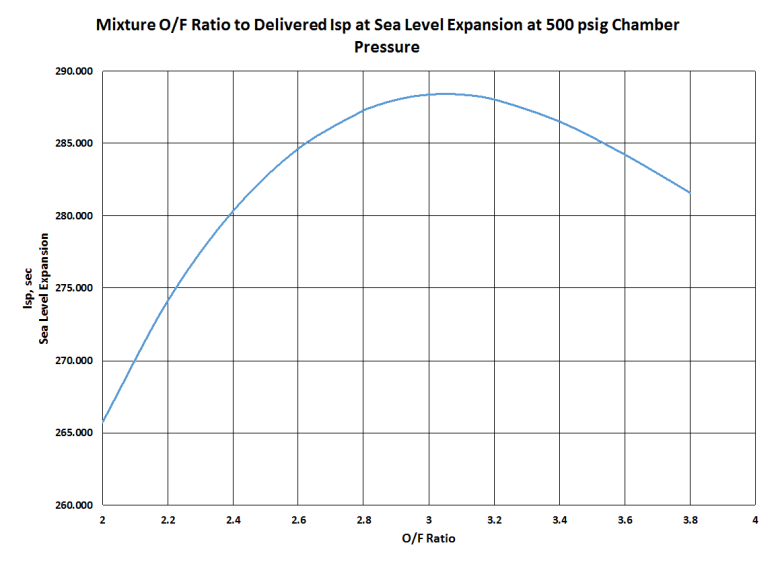Motor Performance Goals –
- Thrust: 1000 lbf throttleable
- Throttle-able to 50% and 75%
- Chamber MEOP: 1000 psig at 100% throttle
- Burn time of approximately 15 seconds
- Gas Pressure Fed System
The Mixture –
The first step taken in the design of this “metholox” motor is determining the oxidizer to fuel ratio. Using NASA’s Chemical Equilibrium with Applications software (CEA Link), the optimum O/F ratio was determined at the desired chamber pressure of 500 psig for sea-level expansion by observing which ratio delivered the highest specific impulse, Isp, which is the thrust per weight flow of propellant. In the chart below, it is seem that the highest delivered at this pressure is at an O/F ratio of approximately 3.06 with a delivered Isp of 288.42 seconds.

The Nozzle –
Using the properties of the of the gas resultant from the combustion, the theoretical thrust coefficient was determined from equation (1-33a) from Huzel and Huang, which is a function of the specific heat ratio, and the ratio of exit pressure to throat stagnation pressure.
Knowing the desired thrust, chamber pressure, and now the theoretical thrust coefficient, the throat area was found via
Injection Rates-
The injection rates of the oxidizer and the fuel into the combustion chamber were calculated using the equations below where r is the O/F ratio. They were found to be approximately 0.85 lb/s of methane and 2.61 lb/s of liquid oxygen.
Oxidizer flow rate:
Fuel flow rate:
Pressure Vessels-
References –
Huzel, D. K., Huang, D. H., & Arbit, H. (1992). Modern engineering for design of liquid-propellant rocket engines, volume 147. Washington, D.C.: American Institute of Aeronautics and Astronautics.
Sutton, G. P., & Biblarz, O. (2010). Rocket propulsion elements. Hoboken, NJ: John Wiley & Sons Inc.

You must be logged in to post a comment.